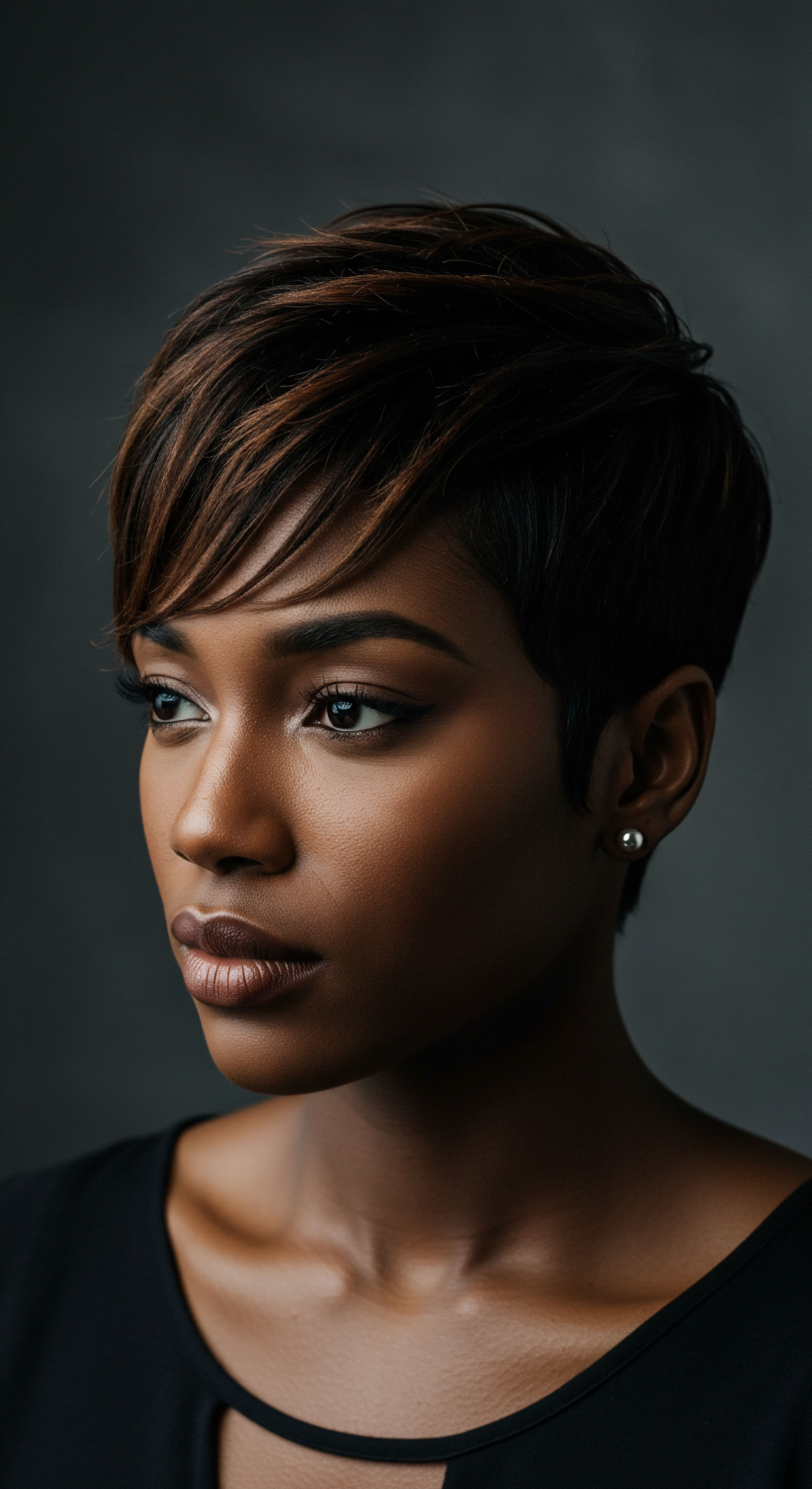
Roots
The whisper of ancient winds across desert sands carries tales not only of pharaohs and pyramids but also of daily life, where beauty held a significant, almost sacred, place. For those of us with textured hair, a curiosity often stirs ❉ how did the ancients tend to their strands, especially in such an arid climate? Their world, though distant in time, shares a common thread with our own pursuit of vibrant, well-nourished hair. Ancient Egyptians, with their profound understanding of natural resources, developed sophisticated approaches to personal care, where oils were not merely a luxury but a cornerstone of hair health and appearance.
Long before modern laboratories synthesized complex compounds, the people of the Nile Valley looked to the earth for their beauty solutions. Their hair care practices were deeply intertwined with their daily existence, reflecting their social status, religious beliefs, and practical needs for protection against the harsh environment. From the humblest citizen to the most regal queen, attention to hair was a communal endeavor, passed down through generations.
Ancient Egyptian hair care practices, deeply rooted in natural resources, reflect a blend of practical needs, social standing, and spiritual beliefs.
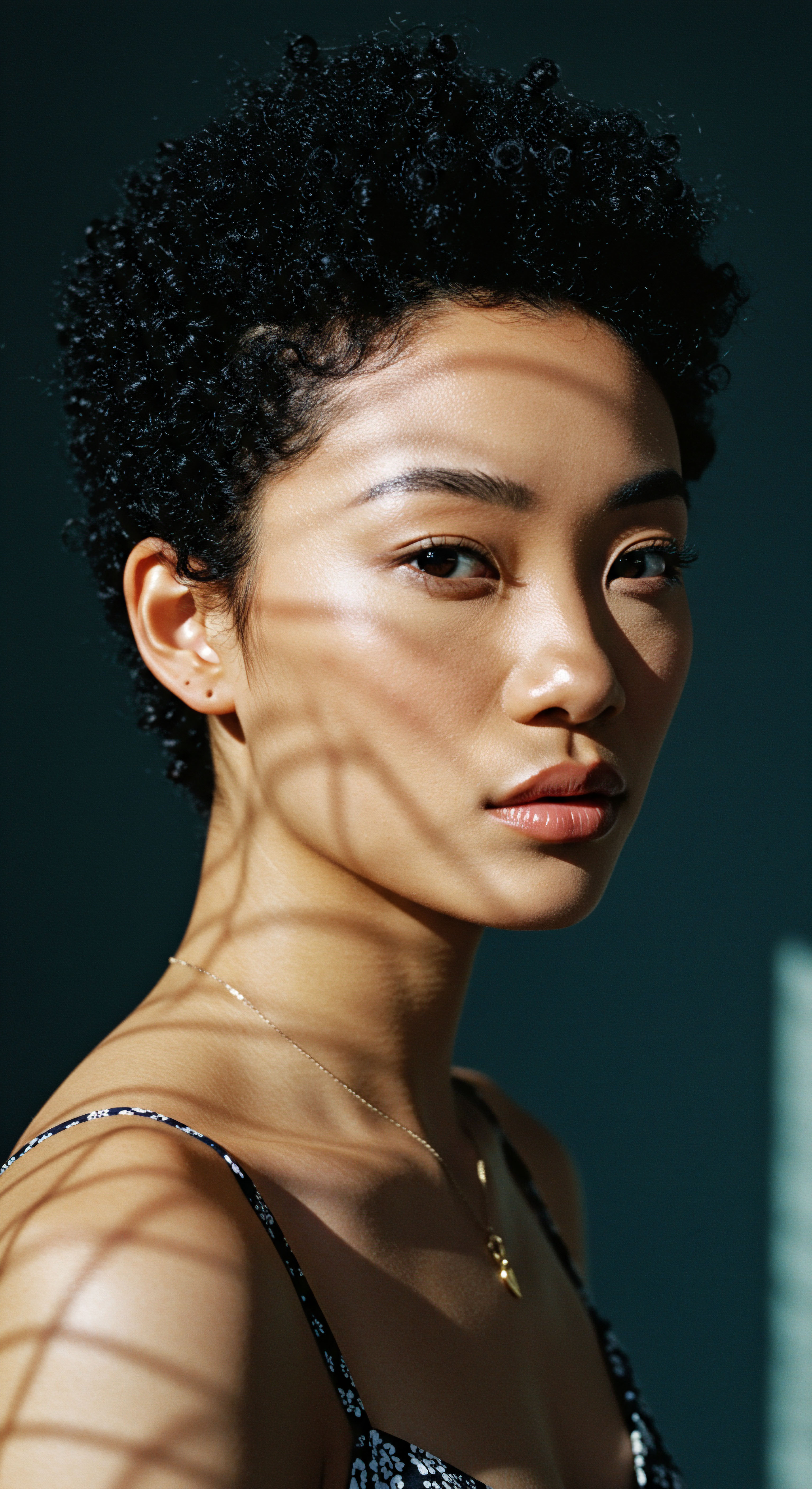
Understanding Ancient Egyptian Hair Care Philosophies
The philosophy surrounding hair care in ancient Egypt extended beyond mere aesthetics. Hair was a symbol of vitality, often imbued with magical and protective qualities. Maintaining healthy hair was linked to well-being in life and ensuring a graceful passage into the afterlife.
Texts and tomb depictions frequently portray individuals with meticulously styled hair, sometimes adorned with elaborate wigs, which themselves required careful maintenance with various unguents. The pursuit of thick, lustrous hair was a shared aspiration, leading to the exploration of countless botanical and animal-derived ingredients.
- Cultural Significance ❉ Hair held deep cultural meaning, signifying status, gender, and age. Elite men often wore elaborate wigs, while children were frequently depicted with a distinct side-lock of youth.
- Practical Protection ❉ The desert climate necessitated protection for both skin and hair from sun and wind. Oils served as a shield against environmental damage.
- Spiritual Connection ❉ Beauty rituals, including hair care, were sometimes linked to spiritual beliefs and the journey into the afterlife.

The Desert’s Bounty Ingredients
The immediate environment provided the primary palette for ancient Egyptian hair care. The Nile’s fertile banks and the surrounding desert offered a surprising array of plants and animal products that became integral to their beauty regimens. These ingredients were chosen for their perceived ability to cleanse, soften, scent, and promote growth. The application of oils was a common practice, aiming to keep hair conditioned and pleasant-smelling.
Archaeological findings, including cosmetic vessels and residue analysis, have allowed modern researchers to piece together some of the key components of these ancient formulations. These discoveries provide a tangible link to the past, revealing the ingenuity of ancient cosmetic chemistry.
One compelling study published in the Journal of Archaeological Science, examining hair samples from ancient Egyptian mummies dating back over 3,000 years, revealed the presence of specific fatty acids consistent with both plant and animal origins, such as palmitic acid and stearic acid. This suggests that ancient Egyptians employed complex mixtures, not solely plant-derived oils, for their hair preparations. This scientific insight moves beyond anecdotal accounts, providing a concrete understanding of the ingredients they utilized.

Ritual
Stepping from the foundational knowledge of ancient Egyptian hair care, we now consider the practical wisdom and daily rhythms that shaped their beauty practices. The application of oils was not a fleeting gesture but often a considered ritual, a moment of connection with oneself and the natural world. Picture the meticulous care, the slow, deliberate movements as these precious unguents were worked into the hair, each drop holding the promise of health and vitality. This section invites us to witness the tangible steps and the specific oils that formed the core of their hair care traditions.
Ancient Egyptians, men and women alike, devoted significant time and resources to their hair and skin. This was not merely about looking appealing; it was also a practical response to the desert climate, providing protection and relief. Combs made from fish bones, excavated from archaeological sites, likely helped distribute oils evenly through the hair.
The application of oils in ancient Egypt was a deliberate ritual, a practical and aesthetic response to the desert climate, and a significant part of daily self-care.
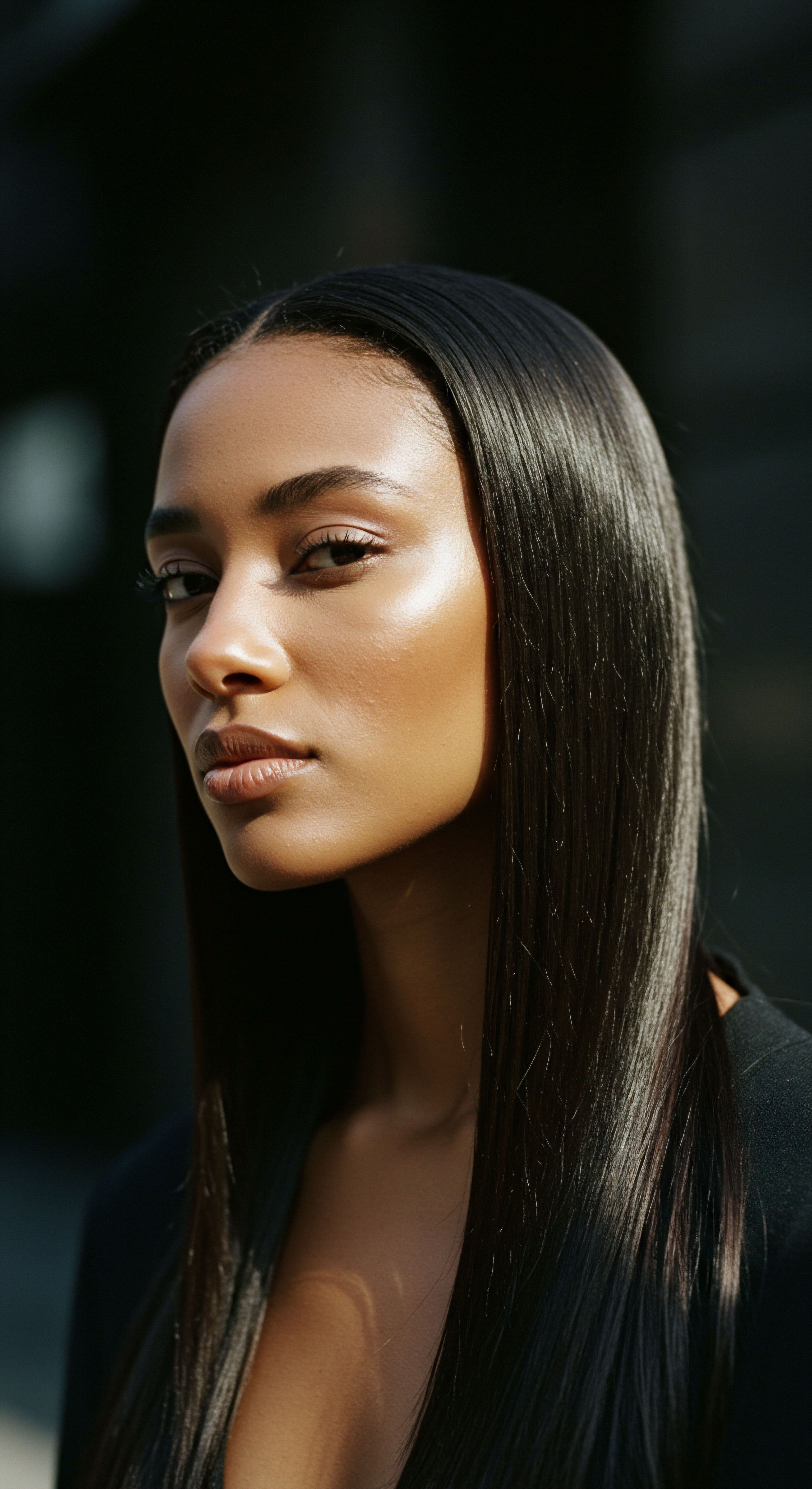
Which Oils Were Commonly Used for Hair Growth?
While a definitive, exhaustive list of every single oil used for hair growth remains elusive due to the passage of time and the degradation of organic materials, archaeological findings and ancient texts provide strong indications. The primary oils identified were often those readily available in the region or through trade.
- Castor Oil ❉ This oil holds a prominent place in ancient Egyptian beauty lore. Its use dates back to at least 1550 BCE, as recorded in the Ebers Papyrus, where it was noted for both medicinal and cosmetic purposes, including promoting hair growth. Modern understanding attributes its benefits to ricinoleic acid and other fatty acids, which can moisturize and nourish the scalp.
- Moringa Oil ❉ Known as “Ben oil” or “behen oil,” moringa oil was highly valued and jars of it have been found in ancient Egyptian tombs. It was used to protect skin and hair from harsh desert conditions and was even considered a beauty treatment for royal women. Its richness in proteins, vitamins, and fatty acids contributes to its ability to strengthen the scalp and hair roots, potentially promoting hair growth.
- Fenugreek Oil ❉ Though perhaps less widely known than castor or moringa, fenugreek was also employed. Its earliest documented uses in ancient Egypt date to around 1500 BCE, where it was used for medicinal and cosmetic properties. Fenugreek contains proteins and nicotinic acid, which are thought to stimulate blood circulation to the scalp and strengthen hair fibers, thereby supporting healthy hair growth and reducing hair fall.

How Were These Oils Prepared and Applied?
The preparation of these oils often involved simple yet effective methods, such as cold pressing seeds to extract their liquid gold. This method would have preserved the integrity of the oil’s beneficial compounds. Once extracted, the oils were sometimes blended with other ingredients, including animal fats, resins, or aromatic plant extracts, to create more complex balms and unguents.
Application was likely a hands-on affair. Oils were massaged into the scalp and hair, possibly with the aid of combs. The goal was to saturate the strands, providing deep conditioning and a lustrous appearance.
These practices were not only about physical benefit but also about the sensory experience, the scent of the oils, and the feeling of well-being they imparted. The use of these fat-based substances also served as a styling product, helping to set elaborate hairstyles in place.
| Ingredient Castor Oil |
| Primary Source Ricinus communis seeds |
| Reported Hair Benefit Hair growth, strength, moisture |
| Ingredient Moringa Oil |
| Primary Source Moringa oleifera seeds |
| Reported Hair Benefit Scalp health, hair strengthening, growth, sun protection |
| Ingredient Fenugreek |
| Primary Source Trigonella foenum-graecum seeds |
| Reported Hair Benefit Hair growth, reduced hair fall, strengthening |
| Ingredient Animal Fats |
| Primary Source Beef, goose, various animal sources |
| Reported Hair Benefit Styling, conditioning, base for mixtures |
| Ingredient Beeswax |
| Primary Source Honeycombs |
| Reported Hair Benefit Styling, hold, sometimes mixed with oils |
| Ingredient This table reflects commonly cited ingredients and their perceived roles in ancient Egyptian hair care, supported by archaeological and textual evidence. |
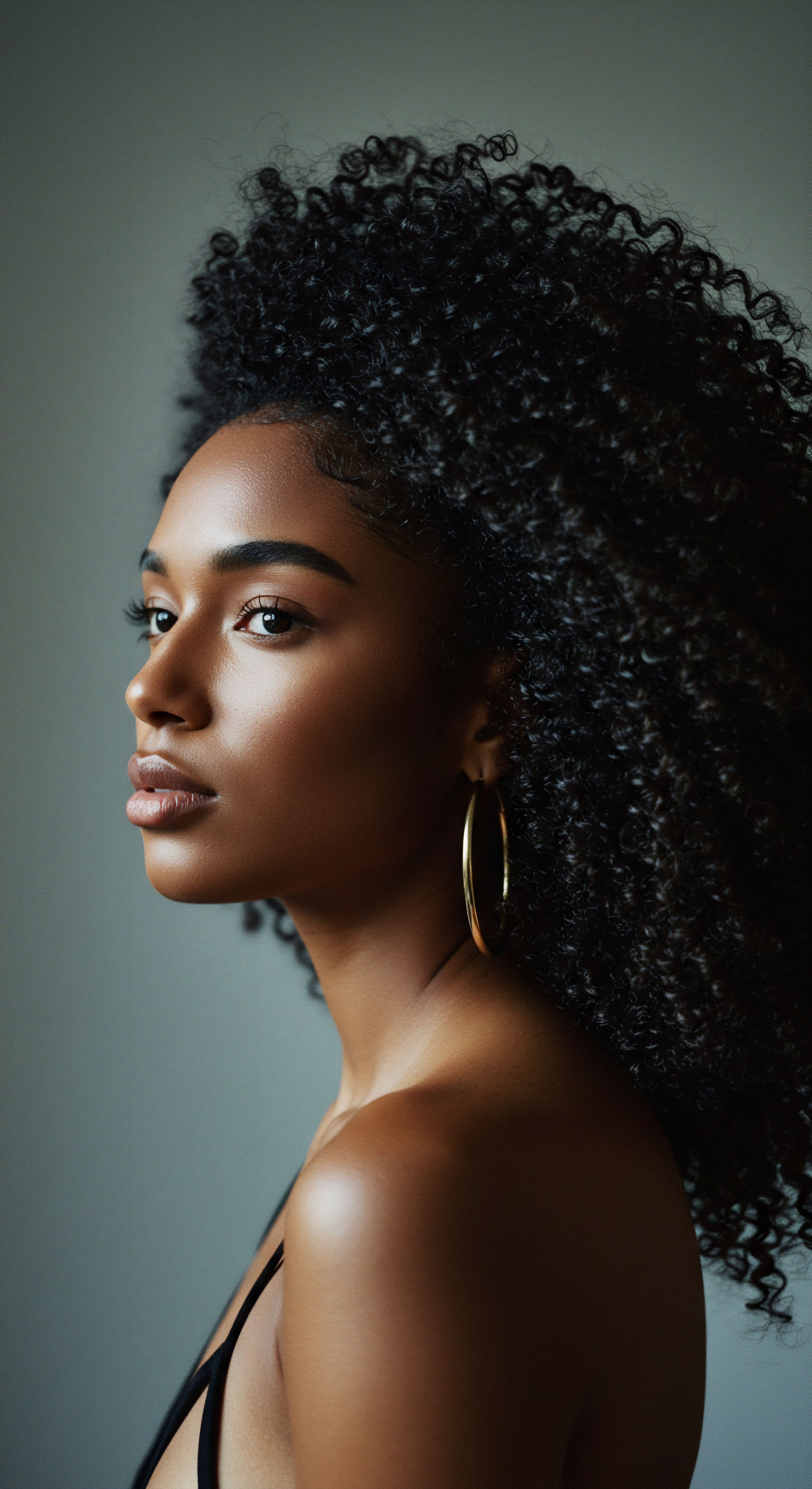
Relay
As we delve deeper into the ancient Egyptian relationship with hair and its care, a more sophisticated understanding begins to surface, moving beyond simple application to the interplay of science, cultural belief, and enduring legacy. How did their practices, seemingly intuitive, align with what modern science now reveals about hair biology? What profound insights can we glean from their long-lost rituals that resonate with our textured hair journeys today? This section seeks to connect the echoes of the past with the knowledge of the present, illuminating the complexities that underscore the quest for hair vitality.
The longevity of ancient Egyptian civilization allowed for a continuous refinement of their beauty practices. Their understanding of botanical properties, though not formalized as modern chemistry, was observational and experiential, honed over centuries. The use of oils was not merely about superficial shine; it aimed for a deeper, more enduring effect on the hair and scalp.
Ancient Egyptian hair care practices offer a profound connection between historical wisdom and modern scientific understanding, revealing a timeless pursuit of hair vitality.
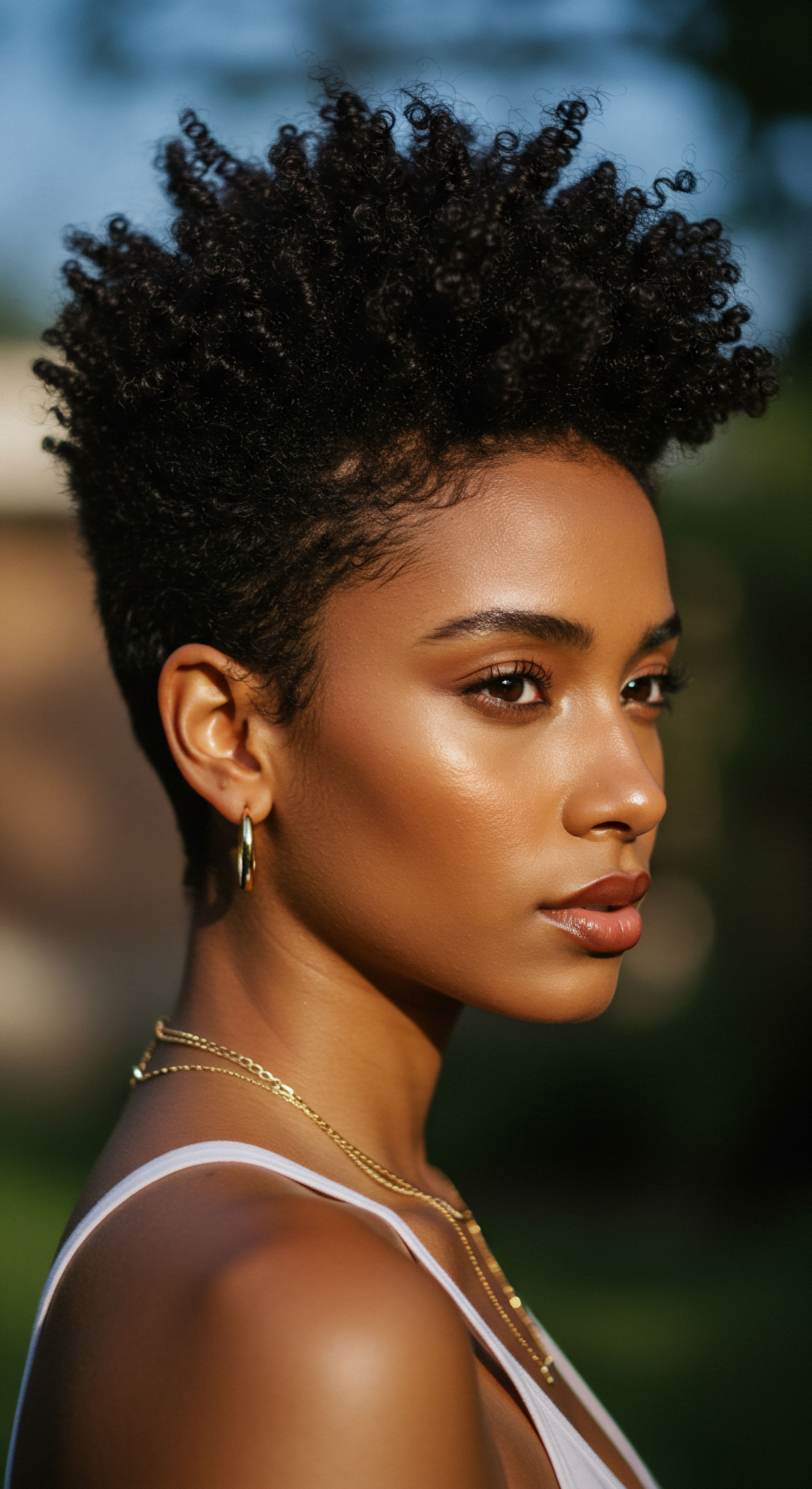
What Did Science Reveal About Ancient Hair Balms?
Modern scientific analysis has brought remarkable clarity to the composition of ancient Egyptian hair preparations. Techniques like gas chromatography-mass spectrometry (GC-MS) have allowed researchers to identify the specific organic compounds present in residues found on mummified hair and in cosmetic jars. This chemical fingerprinting has confirmed the use of a variety of fats and oils.
A significant study published in the Journal of Archaeological Science, analyzing hair samples from mummies, found that a “fat-based gel” was applied to hair, containing biological long-chain fatty acids such as palmitic acid and stearic acid. This substance was interpreted as a styling product used in life, and also as part of the mummification process to preserve hairstyles. This research highlights that the ancient Egyptians were not only using plant oils but also animal fats to achieve desired hair textures and longevity. This complex blend suggests a sophisticated understanding of how different lipids could condition, protect, and hold hair in place.
Further research into embalming materials found in vessels from Saqqara suggests the presence of castor oil mixed with cedar oil, pistacia resin, and elemi, chosen for their antiseptic and antifungal properties. This points to a dual purpose of these oils ❉ not just cosmetic enhancement but also maintaining scalp health, a consideration that holds true for textured hair care today.

Beyond Oils What Else Supported Hair Health?
The ancient Egyptian approach to hair care was holistic, extending beyond just the application of oils. Their broader lifestyle, environmental adaptations, and other practices contributed to overall hair health.
- Hygiene Practices ❉ Egyptians were known for their emphasis on cleanliness. While modern soap was unknown, they used alternative cleansing solutions like mixtures of honey, salt, and natron. Cleanliness would have certainly supported a healthy scalp, a fundamental requirement for hair growth.
- Wig Culture and Scalp Protection ❉ Wigs were a common adornment for both genders, particularly among the elite. These elaborate hairpieces, often made from human hair or plant fibers, provided a layer of protection from the intense sun, shielding the scalp and natural hair from damage. Some Egyptians also shaved their heads, wearing wigs over them, which could help with lice prevention and ritual purity.
- Diet and Nutrition ❉ While direct evidence linking diet to hair growth remedies is less explicit in ancient texts, a diet rich in fruits, vegetables, and grains from the fertile Nile Valley would have naturally provided essential nutrients for overall health, including hair vitality.
The longevity of these ancient practices and their observed effects, even in mummified remains, offers a testament to their efficacy. The combination of nutrient-rich oils, careful application, and a broader cultural emphasis on hygiene and protection formed a comprehensive system of hair care that, in many ways, parallels modern holistic approaches to textured hair health. The ingenuity of ancient Egyptians, in adapting their natural surroundings to create effective beauty solutions, continues to inspire a deeper appreciation for the wisdom of the past.

Reflection
Our journey through the ancient Egyptian world of hair care reveals more than just a list of ingredients; it unveils a profound respect for personal well-being and a keen observational intelligence regarding the natural world. The whispers of their practices, from the careful application of oils to the cultural significance of each strand, resonate deeply with the textured hair experience today. We find a shared understanding that true hair health extends beyond surface appearance, reaching into the realm of nourishment, protection, and self-expression. Their legacy encourages us to look to nature’s gentle offerings, to listen to our hair’s unique needs, and to approach our routines with the same reverence and wisdom that graced the banks of the ancient Nile.

References
- McCreesh, N. C. Gize, A. P. & David, A. R. (2011). Ancient Egyptian Hair Gel ❉ New Insight into Ancient Egyptian Mummification Procedures through Chemical Analysis. Journal of Archaeological Science, 38(12), 3432–3434.
- Buckley, S. & Evershed, R. P. (2001). Organic Chemistry of Embalming Agents in Ancient Egypt. Nature, 413(6857), 803–804.
- Koller, J. Baumer, U. & Schmid, M. (2003). The Chemistry of Ancient Egyptian Cosmetics. In E. R. David (Ed.), Ancient Egyptian Materials and Technology (pp. 317-338). Cambridge University Press.
- Serpico, D. & White, R. (2000). Resins, Amber, and Bitumen. In P. T. Nicholson & I. Shaw (Eds.), Ancient Egyptian Materials and Technology (pp. 430-474). Cambridge University Press.
- Manniche, L. (1999). Sacred Luxuries ❉ Fragrance, Aromatherapy, and Cosmetics in Ancient Egypt. Cornell University Press.
- Germer, R. (1998). Ancient Egyptian Plants. British Museum Press.
- Robins, G. (2020). Hair, Gender, and Social Status in Ancient Egypt. JSTOR Daily.
- Taylor, J. H. (2001). Death and the Afterlife in Ancient Egypt. University of Chicago Press.
- Lucas, A. & Harris, J. R. (1962). Ancient Egyptian Materials and Industries. Edward Arnold.
- Nielsen, S. (2004). Egyptian Beauty Secrets. Carlton Books.
- Zaid, R. (2022). Five Beauty Secrets of the Ancient Egyptians. Preneur World Magazine.
- Chun, H. S. & Park, K. M. (2013). A Study on the Hair Removal Culture of Ancient Egypt. Journal of the Korean Society of Cosmetology, 19(1), 125-134.
- Ebers Papyrus. (c. 1550 BCE). (Various translations and editions available).